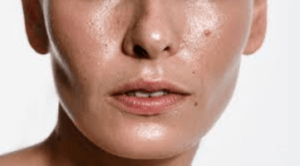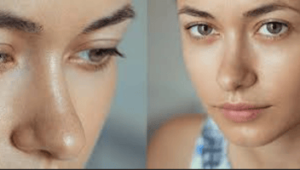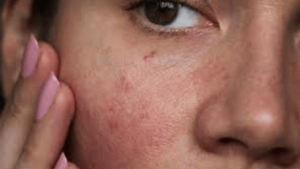Have you ever purchased a skincare product that worked wonders for your friend but left your skin feeling worse than before? The mystery behind this common experience often comes down to one simple factor: different skin types require different care.
Understanding how to identify your skin type is the foundation of effective skincare, yet many of us struggle to accurately determine what our skin truly needs. Your skin is as unique as your fingerprint, and learning to decode its signals can transform your skincare routine from a frustrating guessing game into a tailored approach that delivers results.
Whether you’re dealing with persistent dryness, excess oil, or sensitivity that seems to flare up without warning, the solution begins with proper identification.
In this comprehensive guide, we’ll explore the seven major skin types—normal, dry, oily, combination, sensitive, acne-prone, and mature—and provide you with simple at-home tests and observations to determine exactly where your skin falls on the spectrum.
By the end, you’ll have the knowledge to select products that work harmoniously with your skin’s natural chemistry rather than against it.
Let’s embark on this journey to understanding your skin’s unique language, because when it comes to skincare, self-knowledge truly is power.

The Importance of Knowing Your Skin Type
Let’s understand why this knowledge is so important:
Effectiveness of the Product:
Skincare products are designed to cater to particular skin types. Using products mismatched to your skin can worsen existing issues.
Cost Efficiency:
Knowing your skin type prevents wasting money on products that won’t work for you.
Prevention:
Understanding your skin’s needs helps prevent future skin problems before they develop.
Customized Routines:
Your skincare routine should be as individual as you are—there is no one-size-fits-all approach.
Seasonal Adjustments:
Your skin type knowledge allows you to make informed adjustments as the seasons change and your skin’s needs evolve.
What Are The Different Skin Types?
Normal Skin
Characteristics of Normal Skin:
- Balanced oil production
- Neither too oily nor too dry
- Small, barely visible pores
- Even skin tone
- Rare blemishes or sensitivity issues
- Smooth texture
How to Identify Normal Skin:
The most defining feature of normal skin is its relative absence of persistent problems. If your skin rarely feels tight, greasy, or irritated, you might have normal skin.
After cleansing, normal skin feels comfortable without immediate need for moisturizer, though moisturizing is still beneficial.
 Care Tips for Normal Skin:
Care Tips for Normal Skin:
- Focus on maintenance and protection
- Make use of mild cleansers that won’t upset the balance of your skin.
- Use sunscreen constantly to avoid aging too soon.
- Don’t overdo treatments—your skin doesn’t need intensive intervention
Dry Skin
Characteristics of Dry Skin:
- Feels tight, especially after washing
- May appear dull or rough
- Fine lines are more noticeable
- Prone to flaking or peeling
- Small, nearly invisible pores
- May develop red patches
- Less elastic
How to Identify Dry Skin:
The paper test can help identify dry skin—press a clean facial tissue to your face upon waking. If there’s no oil residue and your skin feels tight, you likely have dry skin.
Another telltale sign is how your skin feels after cleansing—if it feels tight or uncomfortable without immediate moisturizing, that’s dry skin talking.

Care Tips for Dry Skin:
- Use cream-based, hydrating cleansers—avoid foaming products
- While the skin is still a bit wet, apply a moisturizer.
- Consider facial oils as part of your routine
- Use a humidifier in dry environments
- Go for skincare products with ingredients like glycerin, hyaluronic acid, and ceramides
- Avoid hot water, which further strips natural oils
Oily Skin
Characteristics of Oily Skin:
- Shiny appearance, especially by midday
- Enlarged, clearly visible pores
- Prone to blackheads, whiteheads, and pimples
- Thicker skin texture
- Makeup tends to slide off or look “cakey”
- Less prone to visible lines and wrinkles
How to Identify Oily Skin:
The blotting paper test is particularly revealing for oily skin—if the paper picks up significant oil from multiple areas of your face, especially a few hours after cleansing, you likely have oily skin.
Another sign is frequent shine throughout the day, particularly in the T-zone (forehead, nose, and chin).
 Care Tips for Oily Skin:
Care Tips for Oily Skin:
- Use gel or foam cleansers formulated for oily skin
- Don’t skip moisturizer—opt for oil-free, non-comedogenic formulas
- Consider products with niacinamide to regulate oil production
- Clay masks can aid in the absorption of extra oil.
- Blotting papers are helpful for midday shine control
- Avoid heavy, occlusive products that can trap oil
Combination Skin
Characteristics of Combination Skin:
- Oily T-zone (forehead, nose, chin)
- Dry or normal cheeks
- Enlarged pores in the T-zone only
- Prone to breakouts in oily areas
- Different textures in different facial zones
- Can be challenging to treat uniformly
How to Identify Combination Skin:
If your forehead, nose, and chin become oily while your cheeks remain dry or normal, you have combination skin. This skin type often requires different products for different facial areas.
The blotting paper test will show oil only from certain parts of your face, typically the T-zone.

Care Tips for Combination Skin:
- Consider multi-masking (using different masks on different areas)
- Make use of mild, well-balanced cleansers that won’t bother or dry up your skin.
- Apply heavier moisturizers only to dry areas
- Use oil-control products selectively on the T-zone
- Adjust your routine seasonally as combination skin can shift dramatically
- Toners can help balance the different zones
Sensitive Skin
Characteristics of Sensitive Skin:
- Readily reacts to products or external circumstances
- At risk for burning, stinging, itching, or redness
- May develop rashes or hives
- Often feels tight or uncomfortable
- Can be any level of oiliness (dry, normal, oily)
- Visible blood vessels near the surface
- Flushes easily from heat, spicy foods, or alcohol
How to Identify Sensitive Skin:
Sensitive skin consistently reacts negatively to new products, environmental changes, or even emotional stress. If your skin frequently develops redness, itching, or discomfort, especially after trying new products, you likely have sensitive skin.
Patch testing new products is essential for this skin type.
 Care Tips for Sensitive Skin:
Care Tips for Sensitive Skin:
- Use fragrance-free, hypoallergenic products
- Perform patch tests with new products
- Keep your routine simple and consistent
- Look for soothing ingredients like aloe, chamomile, and oat extract
- Avoid alcohol, fragrance, and harsh active ingredients
- Physical sunscreens may be better tolerated than chemical ones
Acne-Prone Skin
Characteristics of Acne-Prone Skin:
- Frequent breakouts (whiteheads, blackheads, pimples, cysts)
- Can be oily, combination, or even dry
- May have inflammation and redness
- Often has post-inflammatory hyperpigmentation
- Pores may appear enlarged
- Skin texture can be uneven
- May be sensitive to many products

How to Identify Acne-Prone Skin:
The key identifier is the regular development of acne lesions, regardless of your skin’s oil production. Acne-prone skin tends to break out consistently, especially in response to triggers like hormonal changes, diet, stress, or certain products.
History matters here—if you’ve dealt with persistent acne throughout different life stages, you likely have acne-prone skin.
Care Tips for Acne-Prone Skin:
- Use non-comedogenic products that won’t clog pores
- Look for ingredients like salicylic acid, benzoyl peroxide, and niacinamide
- Avoid heavy, occlusive products
- Don’t over-cleanse or strip the skin, which can worsen acne
- Consider professional treatments for persistent cases
- Be patient with treatment—results often take 6-8 weeks
- Never pick or squeeze blemishes
Mature Skin
Characteristics of Mature Skin:
- Loss of firmness and elasticity
- Fine lines and wrinkles
- May be drier than in younger years
- Thinner texture
- Uneven pigmentation or age spots
- Visible capillaries
- Slower cell turnover

How to Identify Mature Skin:
Beyond chronological age, signs include decreased bounce when pinched (elasticity test), more visible fine lines, especially when skin is dehydrated, and longer recovery time when skin is pressed (press your cheek and see how quickly the skin bounces back).
Mature skin can also be any basic type (dry, oily, combination) with these added concerns.
Care Tips for Mature Skin:
- Focus on hydration and moisture retention
- Use products with antioxidants to combat free radical damage
- Consider retinoids for cell turnover and collagen production
- Never skip sunscreen—UV damage accelerates aging
- Seek out peptides to help maintain the structure of your skin.
- Incorporate regular gentle exfoliation to remove dull surface cells
- Consider treatments like microcurrent or LED therapy
Factors That Can Change Your Skin Type
It’s important to understand that your skin type isn’t necessarily fixed for life. Several factors can cause temporary or permanent changes:
Hormonal Changes:
Puberty, menstruation, pregnancy, and menopause
Seasonal Variations:
Many people are oilier in summer and drier in winter
Geographic Location:
Humidity and climate significantly impact skin
Age:
Skin typically becomes drier as we age
Diet:
What you eat influences your skin’s behavior
Medications:
Many prescriptions can alter skin type
Skincare Products:
Using the wrong products can disrupt your skin’s natural balance
Understanding these factors helps explain why your skin might not behave the same way year-round or throughout your life. Regularly reassessing how to identify your skin type ensures your skincare routine remains effective.
Common Myths About Skin Types
Let’s debunk some persistent misunderstandings about skin types:
Myth:
Oily skin doesn’t need moisturizer.
Reality: All skin types need hydration—oily skin often overproduces oil to compensate for dehydration.
Myth:
Squeaky clean skin means properly cleansed skin.
Reality: That tight, squeaky feeling indicates you’ve stripped your skin of necessary oils.
Myth:
You can shrink pores permanently.
Reality: Pore size is largely genetic, though their appearance can be minimized.
Myth:
Your skin type is the same as your mother’s or father’s.
Reality: While genetics play a role, many factors determine skin type.
Myth:
Expensive products work better for your skin type.
Reality: Price doesn’t determine effectiveness—the right ingredients for your skin type do.
FAQs
What if my skin type changes throughout the month?
Fluctuating skin concerns often relate to hormonal changes, especially in women. If your skin becomes oilier or develops breakouts around your menstrual cycle, you’re experiencing normal hormonal fluctuations.
Adapt your routine slightly during these times—perhaps incorporating more oil-control products during oilier phases—while maintaining your baseline routine. Track these changes in a skin journal to identify patterns and prepare accordingly.
Can your skin type change with the seasons?
Absolutely. Many people experience seasonal skin type shifts. Summer’s humidity often increases oil production, while winter’s dry air and indoor heating can cause even normally oily skin to become dehydrated.
The key is having a flexible, adaptive approach to skincare—perhaps using lighter products in summer and more nourishing ones in winter. Pay attention to how your skin feels rather than rigidly adhering to products labeled for your ‘usual’ skin type.
Is it possible to have more than one skin type simultaneously?
Yes, this is the definition of combination skin, but you can also have overlapping concerns. For example, you can have acne-prone sensitive skin or aging dry skin.
The key is prioritizing your most pressing concerns while being gentle enough to accommodate your skin’s sensitivities. Multi-masking and zone-specific product application are excellent strategies for addressing multiple skin types simultaneously.
How often should I reassess my skin type?
A good rule of thumb is to reassess your skin type seasonally (four times a year) and after any major life change like pregnancy, moving to a new climate, or starting new medications.
However, daily observation is equally important—note how your skin responds to your current routine and be willing to make adjustments when needed. Your skin communicates with you daily; learning to listen to these signals helps you remain responsive to its changing needs.
Can skincare products change my skin type?
While skincare products cannot permanently change your genetically-determined skin type, they can certainly alter your skin’s behavior temporarily. Using overly harsh products can trigger increased oil production as your skin tries to compensate.
Conversely, using extremely rich products on naturally oily skin can lead to congestion and breakouts. The right products work with your natural skin type, balancing and supporting it rather than fighting against its inherent characteristics.
Conclusion…
Understanding how to identify your skin type is the important first step in developing an effective skincare routine. Rather than following trends or using what works for others, this knowledge empowers you to make informed choices specific to your skin’s unique needs.
Remember that while we’ve outlined seven distinct skin types, many people have characteristics of multiple types or experience changes based on hormones, environment, and age. The goal isn’t to fit perfectly into one category but to understand your skin’s specific tendencies and needs.
Listen to your skin—it communicates clearly when something isn’t working. Be willing to adjust your routine as needed, and don’t hesitate to consult a dermatologist for persistent concerns that don’t respond to over-the-counter solutions.
By taking the time to truly understand your skin type, you’re investing in your skin’s long-term health and appearance. The most effective skincare routine isn’t necessarily the most expensive or complicated—it’s the one tailored specifically to your unique skin type and concerns.



